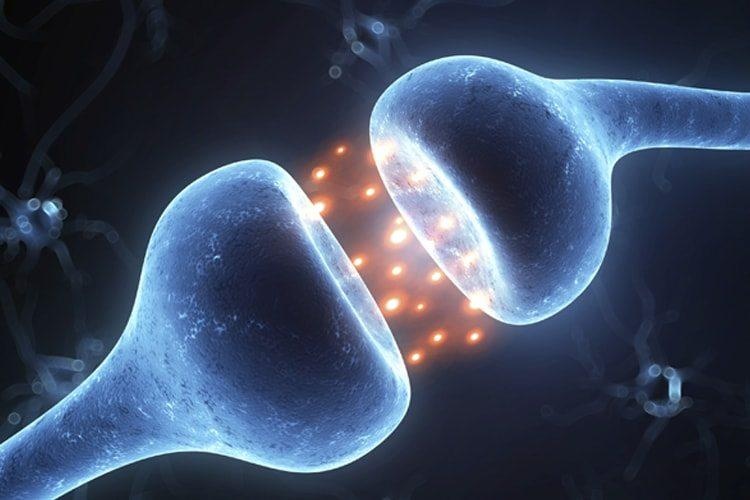“Homeostasis” and “the endocannabinoid system” may sound like two highly abstract, science-laden terms, but they actually have very palpable implications in everyday life. More importantly, not only are the two tightly entwined, but also with our health and well being.
Homeostasis
Homeostasis is responsible for our inner balance, physiologically and even psychologically. It refers to the processes which our body employs to maintain a stable environment, even at times when we feel unstable and those processes are undesirable. In that sense, homeostasis is reminiscent of a silent vigilante, working behind the scenes to maintain the order, with its actions often misunderstood.
For example, if our temperature goes to 107°F, we become red. This is because our small blood vessels expand in order to bring more of the heated blood to the surface of our bodies where it can cool.
Image credit: modified from Homeostasis: Figure 1 by OpenStax College, Anatomy & Physiology, CC BY 4.0
And just like Gotham without Batman is doomed, when the negative feedback process, and thereby homeostasis, is disrupted, all hell breaks loose within our bodies, hindering normal functions and processes, potentially resulting in diseases and conditions of various severity and nature, from arthritis, to epilepsy, strokes, obesity, Alzheimer’s disease, glaucoma, and even cancer.
The Endocannabinoid System
The endocannabinoid system (ECS)is a network or a messenger system of hormones and neurotransmitters which permeates our bodies. Its two main components are the endocannabinoids and cannabinoid receptors which are spread throughout different areas of our bodies, like telephone poles, sending and receiving signals and thus regulating our cognitive and physiological processes.
ECS and Homeostasis
What homeostasis is to the body is what the ECS is to homeostasis – a support system.
When homeostasis is disrupted, the ECS excretes endocannabinoids into our vessels and “sends” them to communicate with the cannabinoid receptors in the affected area of our body. Endocannabinoids signal the receptors to trigger the necessary responses which work to restore the equilibrium.
Because both the ECS and homeostasis concern our bodies, there are many different examples of ECS’s role in maintaining homeostasis and thus treating a variety of bodily conditions in different areas. For example, scientists have explored how the ECS regulates immune homeostasis in the gut/pancreas via distinct cannabinoid receptors.
That’s why when our ECS is unable to produce enough endocannabinoids on its own, there’s a failure in communication, so to speak, between different cells, which can result in a disrupted homeostasis. This condition is called clinical endocannabinoid deficiency (CED). In such cases, the best therapy is an endocannabinoid transfusion, and cannabis is the universal donor as its phytocannabinoids are virtually identical to the endocannabinoids in our bodies. The flower augments the ECS and respectfully helps it restore homeostasis.
“The theory of CED was based on the concept that many brain disorders are associated with neurotransmitter deficiencies, affecting acetylcholine in Alzheimer’s disease, dopamine in parkinsonian syndromes, serotonin and nor epinephrine in depression, and that a comparable deficiency in endocannabinoid levels might be manifest similarly in certain disorders that display predictable clinical features as sequelae of this deficiency,” explains scientist and cannabis expert Ethan Russo. [2]
This may explain why cannabis has such sweeping effects on us, and why phytocannabinoids help treat such a wide variety of medical conditions –the ECS and its cannabinoid receptors are the doorway, the host of the phytocannabinoids which cannabis supplies, and since the ECS permeates our entire body, so do cannabis’s effects.
Although some people still think of cannabis and its healing properties as nothing but hype, the flower’s intricate, mutually-beneficial connection to the ECS and homeostasis is one of the most eloquent pieces of evidence that prove such people wrong. There’s a reason why cannabis’s effects span the mind and body, and that reason is the ECS’s ubiquitous nature which our well being depends on.
References:
- Acharya, N et al, Endocannabinoid system acts as a regulator of immune homeostasis in the gut, PNAS USA,2017 May 9;114(19):5005-5010, Times cited = 16, Journal impact factor = 9.661
- Russo, Ethan B.Clinical endocannabinoid deficiency (CECD): can this concept explain therapeutic benefits of cannabis in migraine, fibromyalgia, irritable bowel syndrome and other treatment-resistant conditions?,Neuro Endocrinol Lett.2008 Apr;29(2):192-200, Times cited = 62, Journal Impact factor = 0.918









